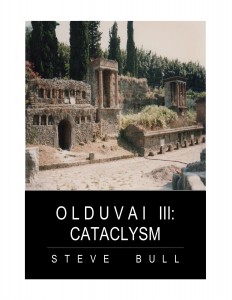Home » Posts tagged 'land'
Tag Archives: land
A Bold Agenda for Treating Land as a Commons
A Bold Agenda for Treating Land as a Commons The privileges of land ownership are so huge and far-reaching that they are generally taken as immutable facts of life – something that politics cannot possibly address. A hearty salute is therefore in order for a fantastic new report edited by George Monbiot, the brilliant columnist […]
The Polyculture Market Garden Study–Results From Year 4–2018
THE POLYCULTURE MARKET GARDEN STUDY – RESULTS FROM YEAR 4 – 2018 HERE ARE THE RESULTS FROM THE FOURTH YEAR OF OUR MARKET GARDEN POLYCULTURE STUDY. THIS STUDY LOOKS AT THE DIFFERENCES BETWEEN GROWING ANNUAL VEGETABLES AND HERBS IN POLYCULTURES VS GROWING THEM IN TRADITIONAL BLOCKS. In this post you will find an overview of […]
5 HA Polyculture Farm Design–Suhi Dol Revisited
5 HA POLYCULTURE FARM DESIGN – SUHI DOL REVISITED Paul Alfrey from Balkan Ecology Project shares with us his observations and thoughts in regards to a visit he made to a farm he designed and how it slowly developed into a polyculture of fruit trees, aquaculture and vegetable gardens. Last week Dylan and I set off […]
How to Green the Desert: Europe’s Heatwave and Some Holistic Suggestions
HOW TO GREEN THE DESERT: EUROPE’S HEATWAVE AND SOME HOLISTIC SUGGESTIONS In the Northern Hemisphere, the balance of light is turning ever more towards darkness as we approach the Autumn Equinox. This is following a summer which in many places was unusually hot and dry(1, 2). This is perhaps not unexpected; climate change scientists have […]
Russia Offers 2.5 Million Acres Of Farmland To China, Amid Worsening Trade War
Russia Offers 2.5 Million Acres Of Farmland To China, Amid Worsening Trade War China and Russia recently announced a new age of diplomacy between the two countries, at a time when President Trump is targeting both with precision-guided economic warfare. China finds itself reeling under trade disputes with the US, as the next round of […]
Save Our Soils
SAVE OUR SOILS All terrestrial life depends on soil, directly or indirectly. Although our understanding of topsoil has grown by leaps and bounds over the past decades, we are still losing this invaluable resource at a frightening pace. Less than thirty per cent of the world’s topsoil remains in fair or acceptable condition. The fragility […]
The Beginners Guide To Selecting, Stockpiling And Defending A Survival Retreat Part One
The Beginners Guide To Selecting, Stockpiling And Defending A Survival Retreat Part One In order to survive a catastrophe of monumental proportions you will have to have a place to get to where you can ride out the storm in safety. If it is near a city, or a sizable town, or any closer than […]
Farming: A Not-For-Profit Enterprise?
Farming: A Not-For-Profit Enterprise? I am just musing now, as in a-muse, not advocating and criticizing. What if the economics of money profit and loss, under capitalism, or socialism, or a monarchy or any other system, doesn’t really work for farming. Maybe growing food is supposed to be a not-for-profit enterprise, a part of our […]
The Law of the Land
The Law of the Land Land is—or should be—invaluable, perhaps even sacred. It is not only a place to live, but also a source for food, for water, for fuel, and for sustenance of almost every kind. Land management choices have profound impacts on our ecosystems and environment, and thus on our health, well-being and […]
Conflicts in the food, energy, land and water nexus
Conflicts in the food, energy, land and water nexus There is growing concern over future food production and increasing competition for resources in the food, energy and water nexus are reflected in a new interest for investment in land and water. “I cannot farm myself out of this water problem,” says Mark Shannon, a farmer […]
New Report Urges Western Governments to Reconsider Reliance on Biofuels
New Report Urges Western Governments to Reconsider Reliance on Biofuels Western governments have made a wrong turn in energy policy by supporting the large-scale conversion of plants into fuel and should reconsider that strategy, according to a new report from a prominent environmental think tank. Turning plant matter into liquid fuel or electricity is so inefficient that […]



